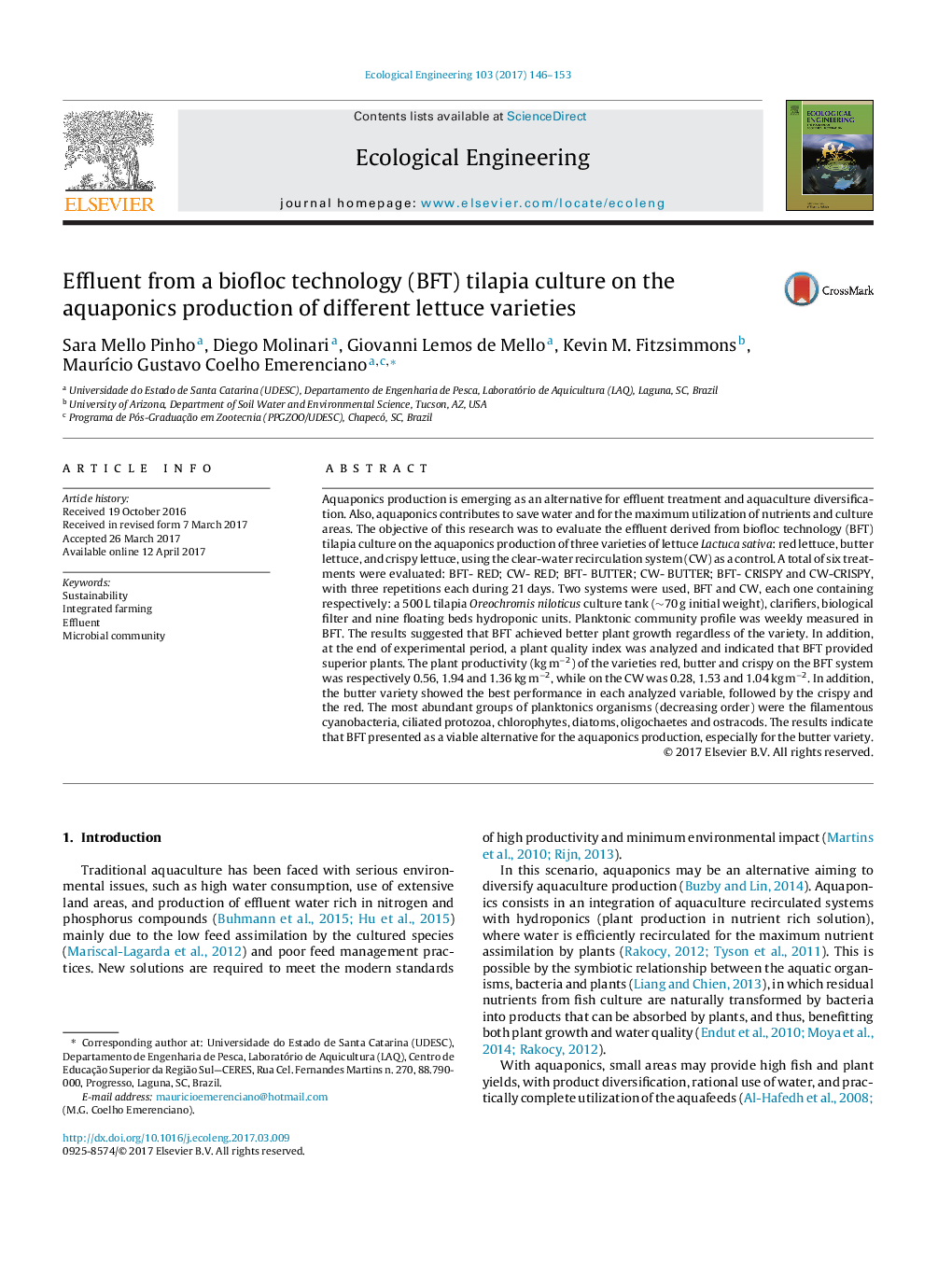| Article ID | Journal | Published Year | Pages | File Type |
|---|---|---|---|---|
| 5743573 | Ecological Engineering | 2017 | 8 Pages |
â¢Biofloc system (BFT) effluent is an alternative for lettuce aquaponics production.â¢BFT effluent achieved better plant growth including better visual aspects as compared to the clear-water (CW) system.â¢Butter lettuce variety presented the best growth results.
Aquaponics production is emerging as an alternative for effluent treatment and aquaculture diversification. Also, aquaponics contributes to save water and for the maximum utilization of nutrients and culture areas. The objective of this research was to evaluate the effluent derived from biofloc technology (BFT) tilapia culture on the aquaponics production of three varieties of lettuce Lactuca sativa: red lettuce, butter lettuce, and crispy lettuce, using the clear-water recirculation system (CW) as a control. A total of six treatments were evaluated: BFT- RED; CW- RED; BFT- BUTTER; CW- BUTTER; BFT- CRISPY and CW-CRISPY, with three repetitions each during 21 days. Two systems were used, BFT and CW, each one containing respectively: a 500 L tilapia Oreochromis niloticus culture tank (â¼70 g initial weight), clarifiers, biological filter and nine floating beds hydroponic units. Planktonic community profile was weekly measured in BFT. The results suggested that BFT achieved better plant growth regardless of the variety. In addition, at the end of experimental period, a plant quality index was analyzed and indicated that BFT provided superior plants. The plant productivity (kg mâ2) of the varieties red, butter and crispy on the BFT system was respectively 0.56, 1.94 and 1.36 kg mâ2, while on the CW was 0.28, 1.53 and 1.04 kg mâ2. In addition, the butter variety showed the best performance in each analyzed variable, followed by the crispy and the red. The most abundant groups of planktonics organisms (decreasing order) were the filamentous cyanobacteria, ciliated protozoa, chlorophytes, diatoms, oligochaetes and ostracods. The results indicate that BFT presented as a viable alternative for the aquaponics production, especially for the butter variety.
